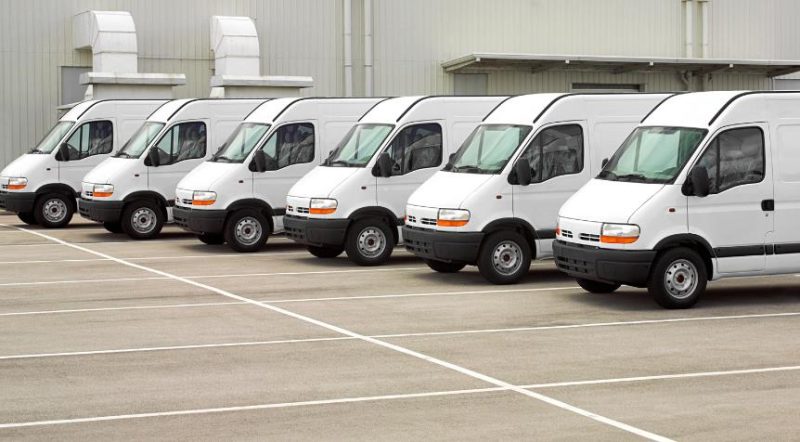Building your company’s fleet of vehicles is an essential but expensive task. Although petrol and diesel prices have fallen recently, fuel is still seriously overpriced due to high demand and insufficient supply. There are also many costs involved with buying new cars, maintaining the fleet and training drivers.
How to Minimise Costs While Growing Your Fleet?
1. Buy Based on Lifetime Value
It’s usually a buyer’s first instinct to base their purchasing decision on the vehicle’s price tag. The down payment is obviously important, but it isn’t always an accurate reflection of the truck’s long-term expenses. You must build your fleet based on lifetime value, not short-term costs.

A great place to start your research is by looking at other companies buying behaviour. Your competitors are also trying to cut costs while growing their fleets, so their purchases can give you relevant insights. These commercial trucks and vans had the most sales in the U.K. in 2022:
- Ford Transit Custom
- Ford Transit
- Mercedes Sprinter
- Vauxhall Vivaro
- Ford Ranger
- Volkswagen Transporter
- Ford Transit Connect
- Peugeot Expert
- Renault Trafic
- Volkswagen Crafter
Fuel, insurance, routine maintenance and other recurring expenses can significantly impact a vehicle’s lifetime costs. That’s why you must look at the entire picture, not just the immediate purchase. These trucks and vans might initially be more expensive, but their reliability and low maintenance costs will make them more affordable in the long run.
2. Train Drivers to Conserve Fuel
The average business with a commercial fleet wastes 5%-10% of its annual budget on simple operational inefficiencies. The biggest reason for this trend is irresponsible driving. Poor driving habits lead to vehicle overuse and a decline in fuel efficiency. Some researchers estimate that 47% of the total cost of ownership comes solely from the driver’s behaviour.

With these statistics in mind, teaching your employees to conserve your fleet’s fuel is essential. Drill responsible driving habits into their training programme, including these common-sense practises:
- Avoid idling at all costs.
- Follow the speed limit, especially on freeways.
- Don’t slam on the gas or brake pedal.
- Pay attention to the flow of traffic to prevent sudden stops.
- Use the windows instead of air conditioning.
- Activate cruise control wherever possible.
It’s challenging to hold drivers accountable when they’re on the roads by themselves. The only reliable way to enforce these habits is by integrating compliance tools, such as fleet management software, telematics and GPS systems. These tools will automatically monitor driver behaviour and help you stay on top of preventive maintenance.
3. Consider Buying Used Vehicles
Car manufacturing in the U.K. hit a 66-year low in 2022 due to a shortage of essential parts and COVID-related restrictions on global automotive supply chains. New commercial vehicles are still available, but their prices are higher than usual due to the limited supply. Your company might not be able to afford multiple cars fresh off the assembly line.
If 2023 and 2024 models are too pricey, consider buying used vehicles for your fleet. You can save thousands of dollars by purchasing a 2019 or 2020 edition from a used car dealer or another company. Trucks that are just a few years old are still compatible with fleet management software and telematics.

Higher maintenance costs are the most obvious potential downside of buying used fleet vehicles. However, a preowned car will be a sound investment if you perform a thorough inspection and steer clear of minor mechanical issues. Driver training protocols will also keep your fleet’s used vehicles in good shape.
Plus, used cars currently have high trade-in and resale values due to the automotive industry’s inventory shortage. Whenever you decide to upgrade, you can sell the preowned vehicle to a dealer and make your money back. You might even turn a profit if you take good care of the company car.
4. Optimise Driving Routes
Finding the most optimal routes is a great way to minimise multiple expenses, including refuelling, vehicle maintenance and accident-related repairs. Fleet management software also has this capability. It can map out the fastest possible routes for each specific job. It considers the truck’s location, traffic patterns, weather conditions and even the driver’s history.

Electronic logging devices can also help drivers record unique data about different routes. Sometimes unexpected obstacles pop up, such as flat tyres and health emergencies. Your company must log these incidents and feed the fleet management software new data. More information leads to more accurate time estimates and faster routes.
Buy and Manage Your Vehicles Responsibly
Minimising your fleet’s costs consists of two crucial tasks: responsible buying and management. Building your fleet won’t be easy, but it can be simple.







